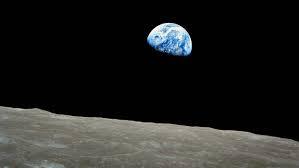14.01.2025

The early Earth was an extreme place. Asteroids pummeled the surface. Volcanoes spewed lava and carbon dioxide. The thick, toxic atmosphere lacked oxygen. Yet, in this turmoil, life emerged.
Scientists still aren’t sure how life first arose and persisted, but new research published in Proceedings of the Royal Society B suggests that chemical precursors to life coped with such harsh conditions via reversible changes in activity and protection, a phenomenon known as dormancy.
Planetary Science Institute Associate Research Scientist Kevin Webster led the paper and Jay Lennon of Indiana University was co-author.
“I’m really interested in questions relating to the origin of life,” Webster said. “My collaborator, Jay Lennon, is really interested in dormancy. We were talking one day, and he asked if I thought dormancy was older than life. And I said, I’m almost certain it is. That’s what led to this paper.”
Organisms use dormancy to mitigate the risk of death by protecting themselves against unfavorable conditions and resuscitating once favorable conditions return.
“If you’re active, but there’s no food because the river is drying up for instance, you’re going to die,” Webster said. “But if you’re able to withstand those really dry conditions while dormant, then you can return to activity as soon as there’s water again and live to pass on your genetic information.”
Webster and Lennon dug into the fossil record and combed over the tree of life to find that dormancy has been used by a wide variety of organisms and for all of Earth’s history, including today.
“By decreasing rates of mortality under suboptimal conditions, dormancy would reduce the probability of local and global extinction events. Also, dormancy creates a ‘seed bank’ of inactive individuals,” the authors wrote, meaning life need not repeatedly restart during Earth’s turbulent youth.
Key to this paper, however, is not just that dormancy made life more robust, but that even before life arose, its chemical precursors likely exhibited traits of dormancy, including the ability to exist in different states of activity, to transition between these states of activity and to experience some degree of protection from decay while dormant.
Some molecules, through various processes can switch between a state of dormancy (during which it is protected, but unable to replicate) and activity (during which it is more vulnerable to the environment, but able to replicate). Switching between these states might occur in conjunction with changes in the environment, such as temperature, or the availability of other molecules.
For example, DNA – a molecule containing genetic information – is made up of two strands twisted together that can respond to changes in temperature. High temperatures can cause the two strands to separate and cooler temperatures can cause two separated strands to spontaneously recombine. DNA can also wrap itself up around proteins called histones to safely lock away its genetic code and then unwind when there are conditions favorable for replication.
“We make the argument that these molecules can do these things in biological settings, and that on the early Earth we might have gotten some of this behavior occurring prior to the origin of life,” Webster said. In future work, Webster aims to test these ideas through modeling. Specifically, he wants to test how dormancy can affect the stability of chemical reaction networks in prebiotic settings that undergo environmental changes.
What’s more, dormancy likely also influenced how life colonized the planet, depending on where it originated. For example, if life first blossomed in an isolated inland hot spring, dormancy could have helped it disperse beyond the original oasis; If life developed in the globe-spanning ocean, then dormancy might not have played such a crucial role.
Understanding how life sparked, spread and persisted on Earth can also illuminate how life might have originated elsewhere.
“How does life transition from this purely non-living state to one that is eventually alive? I’m fascinated by that question, because it can also inform the search for life on distant worlds,” Webster said. “It can tell us something about the processes that a planet needs to go through for life to arise and what to look for once it does.”
Quelle: THE PLANETARY SCIENCE INSTITUTE
